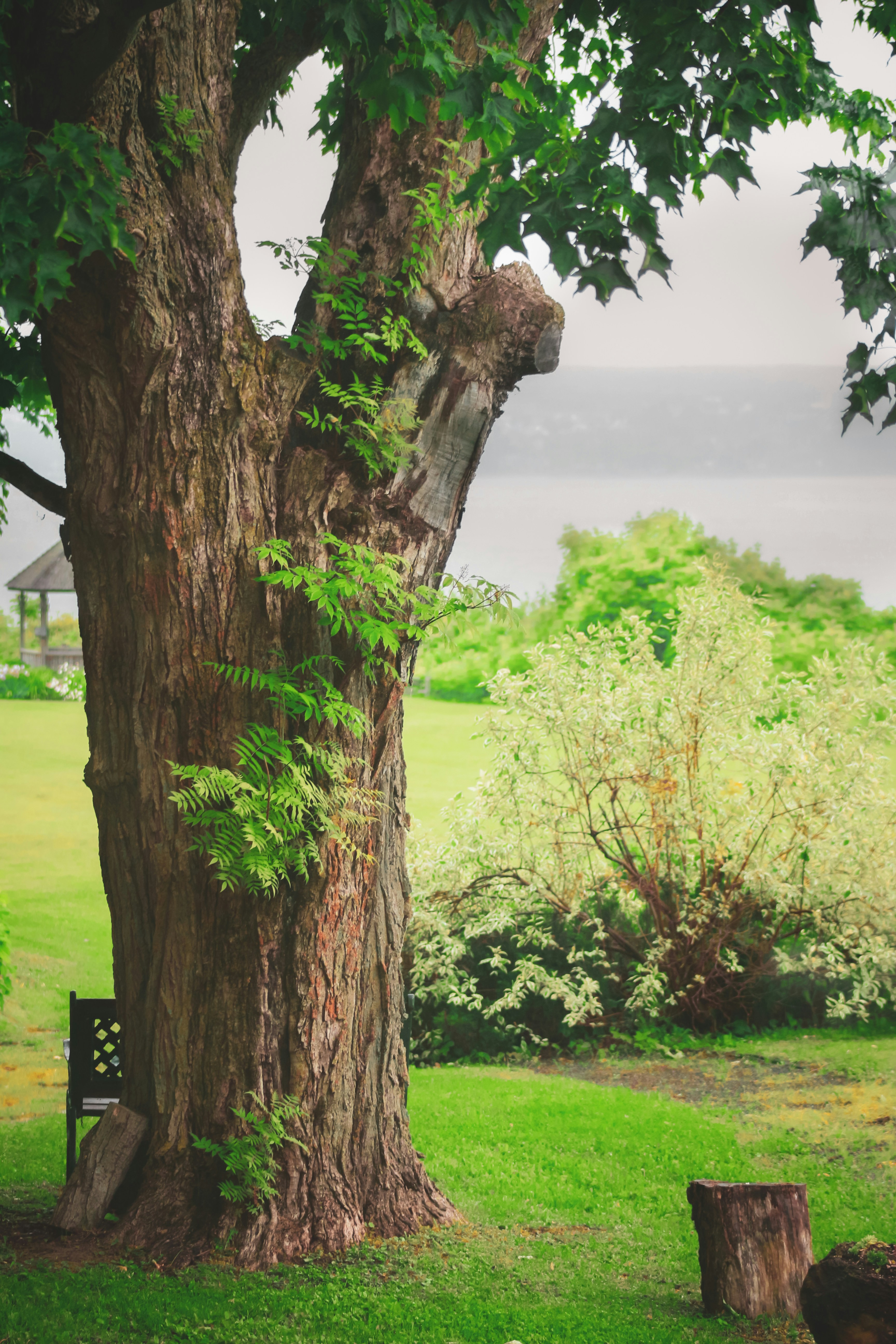Services



Tree removal is the process of cutting down and removing trees from a particular area. It may be necessary for various reasons, including safety concerns, landscaping changes, construction projects, or to eliminate diseased or dead trees. The process typically begins with an assessment of the tree and its surroundings to determine the best approach for removal. Factors such as the tree's size, location, health, and potential hazards are taken into account. Depending on the situation, a professional arborist or tree removal service may be hired to handle the job safely and efficiently. Before the actual removal takes place, proper permits may need to be obtained, especially if the tree is protected by local regulations or if it is located on public property. Additionally, nearby structures, utilities, and landscaping features must be considered to prevent damage during the removal process. Once the necessary preparations are complete, the tree removal process begins with the cutting of branches and limbs. This is often done using chainsaws and other specialized equipment to ensure precision and safety. Careful planning and skillful execution are essential to avoid accidents and minimize property damage. After the branches are removed, the main trunk of the tree is cut down in sections, starting from the top and working downward. This technique, known as "sectional felling," allows for controlled removal of the tree while minimizing the risk of injury or property damage. Once the tree is cut down, the remaining stump may be ground down or removed entirely, depending on the preferences of the property owner. Stump grinding is often preferred as it eliminates tripping hazards and allows for easier landscaping in the future. Finally, the debris from the tree removal process is typically cleared away, either through hauling it offsite or through mulching and recycling. Proper disposal of tree debris is important for maintaining the cleanliness and aesthetics of the property. Overall, tree removal is a complex process that requires careful planning, specialized equipment, and skilled execution to ensure safety and minimize environmental impact. Hiring a professional tree removal service is often the best option for ensuring the job is done correctly and efficiently.

Tree maintenance is a crucial aspect of preserving the health, safety, and aesthetics of urban and rural landscapes. It encompasses a range of practices aimed at promoting the vitality and longevity of trees while mitigating potential risks and hazards they may pose to people and property. Pruning stands as a cornerstone of tree maintenance, involving the strategic removal of branches to enhance tree structure, improve airflow and light penetration, and eliminate dead or diseased wood. Proper pruning techniques not only enhance the tree's appearance but also reduce the likelihood of limb failure during storms or high winds. Regular watering is essential, particularly for newly planted trees and during periods of drought or extreme heat. Adequate hydration ensures trees can withstand environmental stresses and resist pest infestations and diseases. Mulching around the base of trees helps retain soil moisture, regulate soil temperature, suppress weeds, and improve soil structure as it decomposes. Fertilization supplements soil nutrients, promoting healthy growth and development. Soil testing can determine nutrient deficiencies, allowing for targeted fertilization programs tailored to specific tree species and environmental conditions. Integrated pest management (IPM) strategies aim to control pests and diseases while minimizing harm to beneficial organisms and the environment. This approach combines biological, cultural, and chemical control methods, such as the use of beneficial insects, maintaining tree health through proper pruning and watering, and judicious application of pesticides when necessary. Regular inspections by certified arborists help identify potential issues early on, allowing for prompt intervention and preventative measures. Assessing tree health, structural integrity, and risk factors enables arborists to develop customized maintenance plans to address individual tree needs while ensuring public safety. Overall, proactive tree maintenance practices contribute to vibrant, resilient urban forests and landscapes, fostering biodiversity, enhancing property values, and promoting community well-being. By investing in tree care, individuals and municipalities can reap the numerous ecological, economic, and social benefits that healthy trees provide.

Tree trimming, an essential aspect of arboriculture, involves the careful and strategic removal of branches and foliage to maintain tree health, aesthetics, and safety. This practice is not only about shaping trees for visual appeal but also plays a crucial role in preventing hazards, promoting growth, and prolonging the lifespan of trees. The primary objectives of tree trimming include: 1. **Safety**: Trimming removes dead, diseased, or weak branches that pose a risk of falling, especially during storms or high winds. This minimizes the potential for property damage, injuries, and power outages. 2. **Health**: Pruning helps trees by promoting airflow and sunlight penetration, reducing the risk of fungal infections and diseases. It also encourages the growth of new, healthy branches, fostering overall tree vitality. 3. **Aesthetics**: Properly trimmed trees enhance the visual appeal of landscapes, shaping them into desired forms and sizes. This aspect is particularly important for urban areas, parks, and residential properties. 4. **Structure**: Strategic pruning ensures that trees develop strong, well-balanced structures, reducing the likelihood of breakage or splitting. This is especially important for young trees to establish a sturdy framework as they mature. 5. **Clearance**: Trimming maintains adequate clearance from structures, power lines, roads, and pathways. It prevents interference with buildings, utility lines, and ensures safe passage for pedestrians and vehicles. Tree trimming practices vary depending on factors such as species, age, location, and desired outcomes. Techniques include: - **Crown Thinning**: Removing selective branches throughout the crown to improve light penetration and airflow. - **Crown Raising**: Removing lower branches to provide clearance for structures or pedestrians. - **Crown Reduction**: Decreasing the overall size of the tree while maintaining its natural shape. - **Deadwooding**: Removing dead or dying branches to prevent decay and potential hazards. - **Vista Pruning**: Creating strategic openings in the canopy to enhance views without compromising tree health. Professional arborists utilize specialized tools and follow industry standards to ensure safe and effective tree trimming practices while minimizing stress to the tree. Regular maintenance schedules are recommended to keep trees in optimal condition and preserve their beauty and functionality for generations to come.

Stump removal is the process of completely extracting a tree stump from the ground after the tree has been cut down. It's essential for various reasons, including aesthetics, safety, and preventing the spread of disease. Here's a concise overview of the stump removal process: 1. Assessment: Before removal, assess the stump's size, location, and surrounding terrain. This evaluation helps determine the appropriate removal method and any potential challenges. 2. Choose Removal Method: Stump removal methods include Stump Pulverizing, excavation, chemical decomposition, and burning. The choice depends on factors like stump size, accessibility, environmental concerns, and budget. 3. Stump Grinding: This is one of the most common methods. A stump grinder mechanically grinds the stump into wood chips. It's efficient and minimizes ground disturbance. Stump grinding is suitable for most stump sizes but may leave behind roots. 4. Excavation: Larger stumps or those with extensive root systems may require excavation. This involves digging around the stump, exposing roots, and cutting them away. Once loosened, the stump is lifted out of the ground using machinery. 5. Chemical Decomposition: Chemical stump removal involves applying a commercial stump remover to the stump. Over time, the chemicals break down the wood, making it easier to remove. This method is slower but can be effective for smaller stumps. 6. Burning: Burning the stump is another option, but it's less common due to safety and environmental concerns. It involves igniting the stump and allowing it to burn completely. This method requires caution to prevent fires spreading to surrounding vegetation. 7. Cleanup: After removing the stump, clean up the area by filling in the hole left behind, removing wood chips or debris, and leveling the ground. This ensures the area is safe and aesthetically pleasing. 8. Professional vs. DIY: Stump removal can be DIY, especially for small stumps and using chemical methods. However, for larger stumps or where safety is a concern, it's advisable to hire a professional tree service. 9. Considerations: Before removal, consider factors like underground utilities, nearby structures, and environmental regulations. It's essential to plan the removal carefully to avoid any damage or legal issues. By following these steps and considering the appropriate method for your situation, you can effectively remove unwanted tree stumps and enhance the beauty and safety of your property.

Stump grinding is a vital process in landscaping and land management that involves removing tree stumps from the ground using specialized machinery called stump grinders. These machines use a rotating cutting disk with sharp teeth to chip away at the stump until it is ground down below the ground level. Here's a comprehensive overview of Stump Pulverizing: **Process**: Stump grinding begins with an assessment of the stump's size, location, and surrounding terrain to determine the most suitable approach. The stump grinder is then positioned over the stump, and the grinding process starts. The grinder gradually chips away at the stump, reducing it to wood chips and sawdust. **Equipment**: Stump grinders come in various sizes, ranging from small handheld units to large, self-propelled machines. The choice of equipment depends on the size and accessibility of the stump, as well as the terrain and any obstacles present. Safety equipment such as goggles, gloves, and hearing protection is essential when operating stump grinders. **Benefits**: Stump grinding offers several benefits, both practical and aesthetic. It eliminates trip hazards and prevents new tree growth from sprouting around the stump. Grinding stumps also improves the appearance of the landscape, allowing for smoother lawn maintenance and landscaping activities. Additionally, it facilitates the replanting of trees or other vegetation in the cleared area. **Environmental Considerations**: While Stump Pulverizing is generally considered more environmentally friendly than other stump removal methods like chemical treatments or excavation, it still produces wood chips and sawdust as byproducts. Proper disposal or recycling of these materials is crucial to minimize environmental impact. **Cost**: The cost of Stump Pulverizing varies depending on factors such as the size and number of stumps, accessibility, and any additional services required, such as debris removal or backfilling. However, compared to alternative methods like stump removal, grinding is often more cost-effective. **Professional Services**: While some homeowners may attempt Stump Pulverizing as a DIY project, it is often best left to professionals with the experience and expertise to safely and efficiently complete the job. Professional Stump Pulverizing services typically include an assessment, equipment operation, debris removal, and site cleanup. Overall, stump grinding is an effective and efficient method for removing tree stumps and improving the aesthetics and safety of outdoor spaces. Whether for residential landscaping or commercial land management, stump grinding plays a crucial role in maintaining a clean and functional environment.